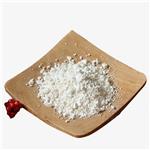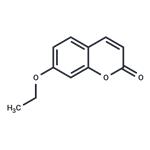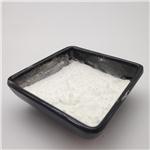Description
7-Ethoxycoumarin is oneof the general substrates for liver cytochrome P450 enzymes, and it is known that CYP1A1,1A2, and 2B1, drug inducedtypes (b-naphthoflavone, isosafrole, and phenobarbital,re-spectively, in rat liver) are mainly responsible for the ECDE activity in the liver.
Chemical Properties
BEIGE CRYSTALLINE POWDER
Uses
7-Ethoxycoumarin is commonly used for metabolism studies, including hepatocyte studies, liver perfusion techniques and cytochrome P450 studies.
7-Ethoxycoumarin has been used to study the functional activity of recombinant P450. ) It has also been used as an internal standard for in vitro S-warfarin 7-hydroxylation and high performance liquid chromatography (HPLC) analysis.
Uses
7-Ethoxycoumarin is a substrate for CYP2B6 used in fluorometric assays of microsomal monooxygenase activity.
Definition
ChEBI: 7-ethoxycoumarin is a member of the class of coumarins that is umbelliferone in which the hydroxy group at position 7 is replaced by an ethoxy group. It is an aromatic ether and a member of coumarins. It derives from an umbelliferone.
Biochem/physiol Actions
7-Ethoxycoumarin is a cytochrome P450 substrate.
Metabolism
7-Ethoxycoumarin is metabolized by many cytochrome P450 enzymes active in foreign compound metabolism and has been used as a prototypic substrate to monitor P450 (P450) activity in both hepatic and extrahepatic tissues.
The in vitro perfusion of the human placental lobule with 7-ethoxycoumarin gives 7-hydroxycoumarin, and perfusion with androstenedione gives the conversion products, estrone, estradiol, and testosterone. The human placenta has only a limited capacity for the metabolism of xenobiotics.
Use of 7-Ethoxycoumarin to Monitor Multiple Enzymes in the Human CYP1, CYP2, and CYP3 Families





